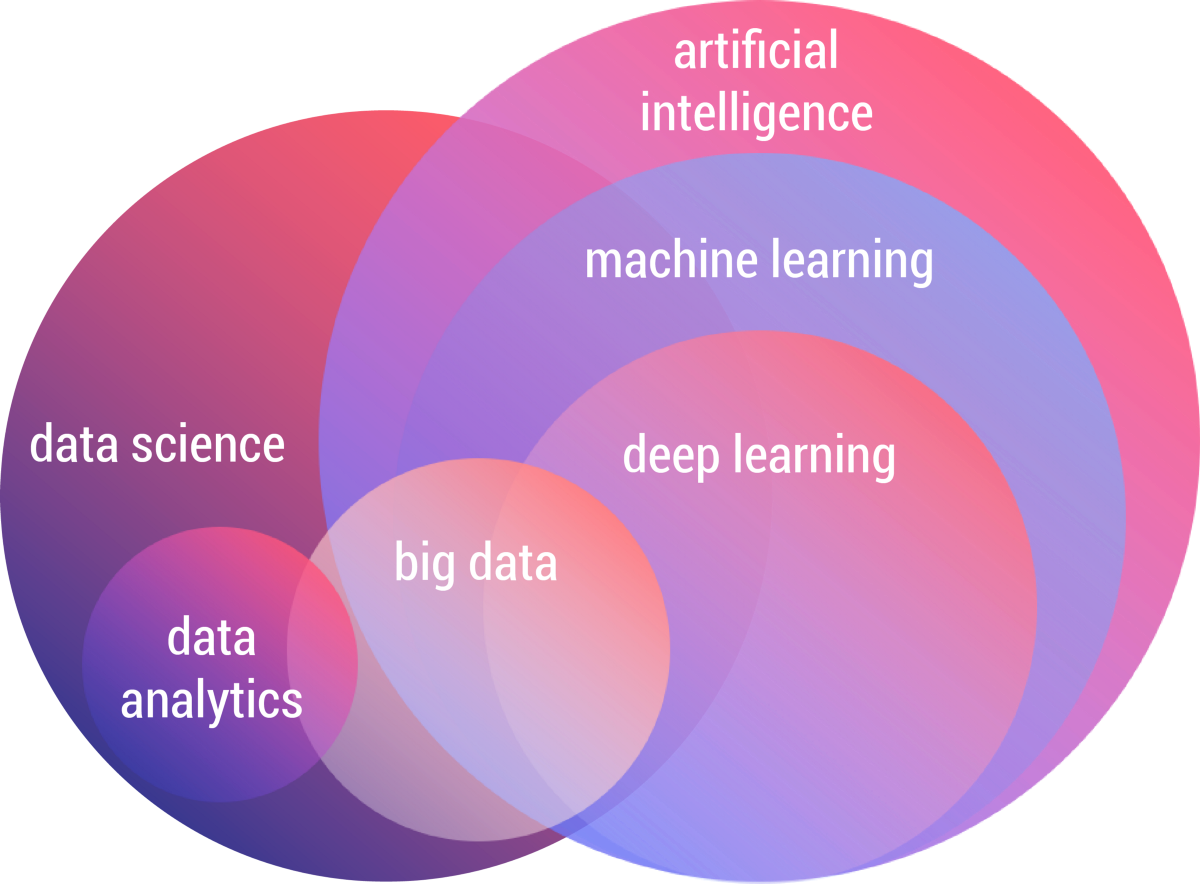
Open-Source Internship opportunity by OpenGenus for programmers. Apply now.
In this article, we will understand how data science is related to various other domains such as Machine learning, Artificial intelligence. Natural language Processing and Deep learning.
Table of contents
- Introduction
- Machine learning
- Artificial intelligence
- Natural language processing
- Deep learning
Introduction
Often we see that the terms data science, artificial intelligence, machine learning and deep learning are used interchangeably. Even though they all are closely related areas, their scopes are different. Below given figure is a Venn diagram representing how all these domains are related with each other.

Artificial intelligence
The term artificial intelligence is used to describe computers that can simulate human thinking capabilities and behavior. Since learning from experience is a sign of intelligence, machine learning and therefore deep learning come under artificial intelligence. We can safely say that artificial intelligence powers data science as machines with AI can understand data, interpret data, learn from it and make intelligent decisions based on insights derived from data.
One of the major crossover between artificial intelligence and data science is the field of machine learning. Tesla's self-driving cars are a great example where AI and data science go hand in hand. It has a built in neural net for vision, radar and sonar processing system. It is equipped with hundreds of sensors and surrounded by smart technologies that capture real-time data of its surroundings. The autopilot system in the car is then trained with the captured data.
Machine learning
Machine learning uses artificial intelligence to enable machines to learn and predict outcomes more accurately without being explicitly programmed to do so. This makes them more similar to humans. The machine learning models continuously learns and improves its performance with the use of necessary data.
Data science is a broad, interdisciplinary field that uses machine learning algorithms when accurate estimates are to be made about a given set of data. While data science helps us focus on the problem at hand and analyze it, machine learning helps us build real-world applications to solve the problem we identified. They cannot work in isolation and both these fields need to be integrated to produce maximum results.
For example, while building a machine learning model to classify customers into various groups (customer segmentation), we need to feed in a training dataset into our model in order for it to learn based on what qualities are the customers classified. But for getting our dataset, we need to follow various steps. We need to first collect the data from various sources, clean the data, filter out the required data, make sure that it is balanced, and that every column represents a valuable information required. All these steps are a part of the data science process.
Methods such as predictive analytics, real-time data analytics monitoring are examples where both data science and machine learning are used hand-in-hand.
Natural language processing
NLP which stands for Natural Language Processing is considered a specific use case of Machine Learning which in turn is used and is an integral part of Data Science. NLP is usually considered as an advanced level of machine learning. It deals with teaching computers how to interpret natural language: speech and text, the way humans do.
Recently, a variety of NLP applications are based on data-driven methods such as neural networks. Large amounts of high quality data becomes valuable as most of these methods are driven by data. Machine translation, word sense disambiguation, summarization, syntactic annotation are some NLP applications that benefit from high quality data.
With the world of social media growing day-by-day, it holds humongous power over the course of a business. Bad reviews on social media can result in huge loss for businesses as the whole world has access to these reviews. Businesses analyze and understand customer attitudes, feedbacks and views about their brand by using text and sentiment analysis.
While working with textual data, NLP techniques such as stemming, tokenization and stop words removal are mainly used to pre-process the data (filtering out what you want). This enhances one's output. Hence we can say that both data science and NLP are related.
Deep learning
Deep learning is advanced machine learning where algorithms use complex, multi-layered structures known as neural networks to draw similar conclusion as a human would. This makes it deep learning too a part of data science.
With deep learning, data trains the computer to learn and recognize the patterns on its own using neural networks. Suppose we want to classify a dog and a lion. In machine learning, we need to specify the characteristics based on which they can be differentiated to the model. But in deep learning, the neural networks single out the features.
Deep learning uses data to improve a machine's ability to classify, recognize and detect. With each new piece of data, the model becomes more complex. But, it also makes the model more accurate.
With this article at OpenGenus, you must have the complete idea of how Data Science is related to ML, AI, NLP, DL.
